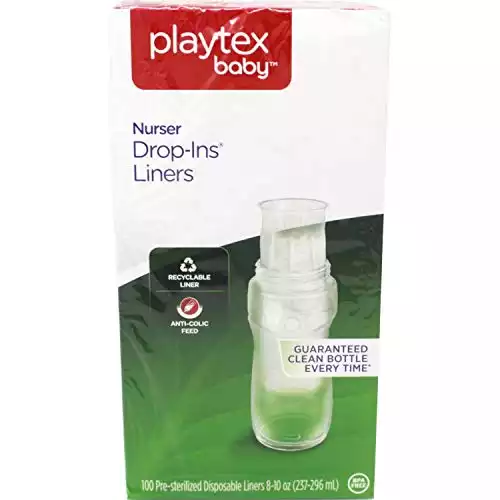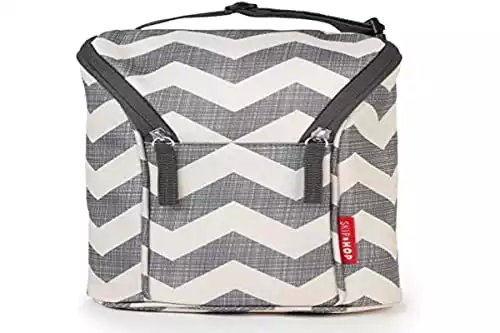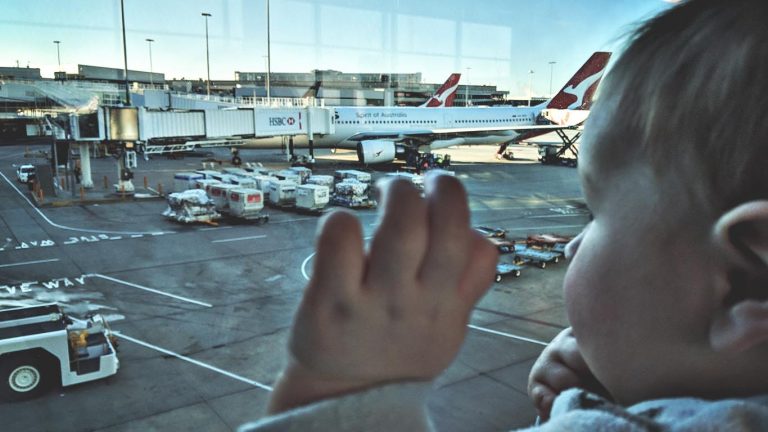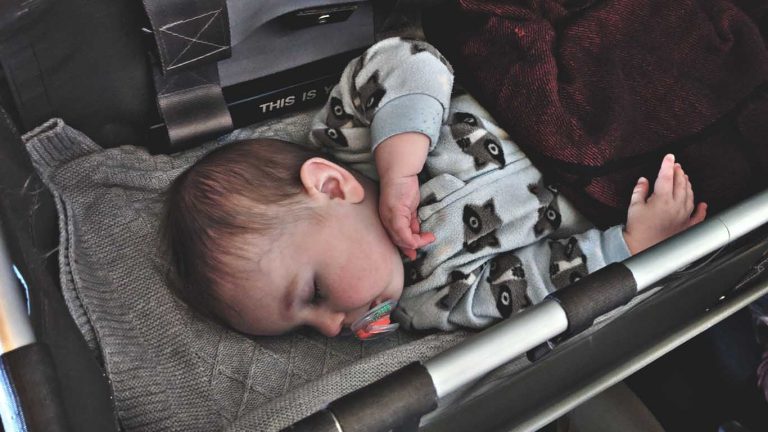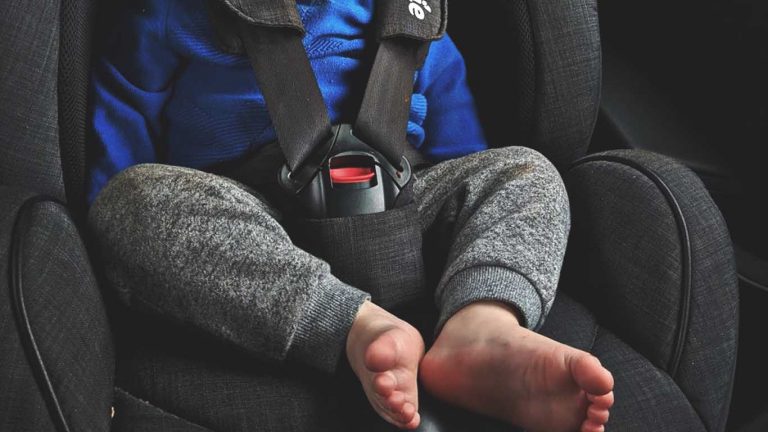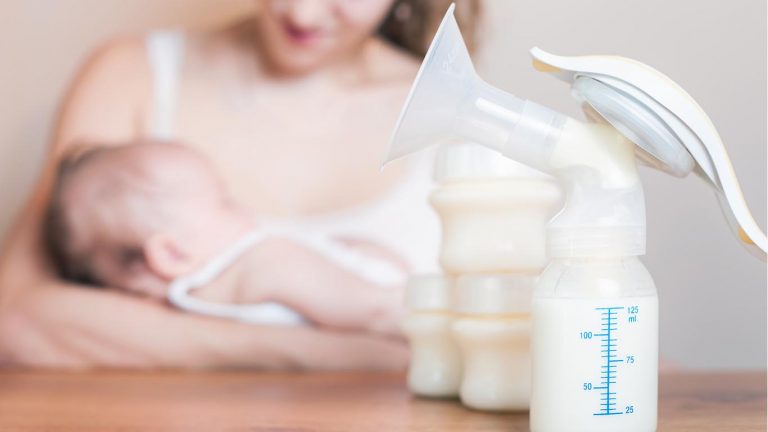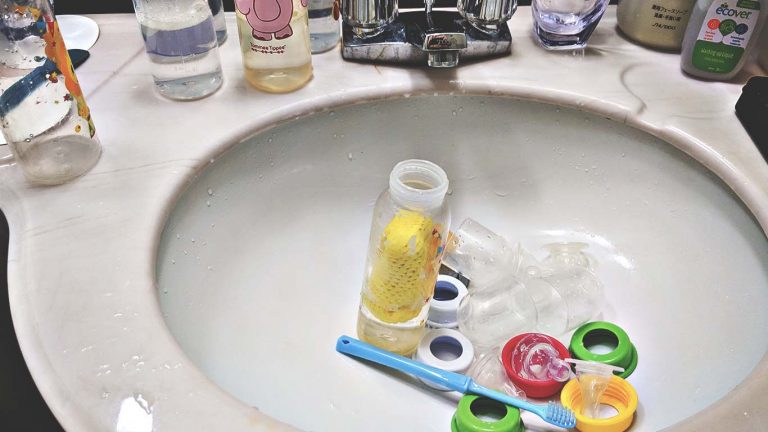There’s so many extra things to worry about when traveling with you children.
If you’re bottle feeding then navigating the airport, getting through security and surviving the actual flight give you a lot to stress about.
If you are bottle-feeding (either formula or bottled breast milk), you have to do a little prep work and planning to get through the flight.
In this guide we’ll walk you through the process and share some tricks that make bottle feeding on a plane easier. By reading this guide you should feel confident getting on the plane with your baby.
What you need to know about airline policy
With airline regulations getting stricter, it’s natural to worry about getting all your supplies on to the plane.
If you are in the United States, TSA regulations treat breast milk and formula as they would treat liquid medication. The TSA website explains exactly what your rights are:
Formula, breast milk, juice in quantities greater than 3.4 ounces or 100 milliliters are allowed in carry-on baggage and do not need to fit within a quart-sized bag. Remove these items from your carry-on bag to be screened separately from the rest of your belongings. You do not need to travel with your child to bring breast milk.
Ice packs, freezer packs, frozen gel packs and other accessories required to cool formula, breast milk and juice are allowed in carry-on. If these accessories are partially frozen or slushy, they are subject to the same screening as described above. You may also bring gel or liquid-filled teethers, canned, jarred and processed baby food in carry-on baggage. These items may be subject to additional screening.
TSA Regulations say that breast milk and formula can be carried on the plane in, “reasonable amounts,” but they are not specific as to how much qualifies as reasonable.
Bring enough for the flight and a bit extra for delays. Be aware that it will be inspected, and you need to report it at the security station.
Airports in the U.K. and other international airports have adopted similar policies, but you will need to present the breastmilk or formula at the security checkpoint and declare it at customs.
The airport security team might open the containers during inspection, so be aware of that.
You have every right to carry formula and breast milk with you. If you encounter any problems, you can ask for a supervisor. In short, if you bring enough for the day, plus a little extra, and then you are sure to present it at the security checkpoint, you should be fine.
What to pack
While packing up your gear for your flight, it would be helpful to have a checklist of all the gear you will need. Let’s walk through this list together:
1. Baby Bottles – Bring enough baby bottles to last the flight, plus two more in case of delays. Check out using bottles with disposable bottle liners for cleaning less equipment while traveling.
2. Formula or Breast Milk – You will also need enough formula or breast milk for the flight plus one day (in case of delays). You could consider buying pre-measured 4 oz. packets, like Similac and Enfamil offer. You could also purchase a formula dispenser to use on the go.
I would recommend sticking with the formula you know, but you might think it easier to find ready-made formula cartons to avoid having to find water at the right temperature. However, the ready-made formula to bottle transfer can sometimes be messy, and the formula cartons can be bulkier in your bag.
3. Cooler – If you are bringing bottled breast milk, you will need a cooler to keep the breast milk cold on your flight. This Skip Hop Grab and Go insulated bag is a handy (and cute!) bottle cooler to snap on your stroller as you go.
4. Ice Packs – You could pack some frozen milk bags to keep your ready-to-use breast milk cold and slowly thaw out for later use. You might also stash some extra ziplock bags to fill with ice from the airport or the plane. Some ice packs will make it through security, but some gel packs might get discarded. Be aware of that.
5. Burp Cloths – Have plenty of these handy for spit up and spills.
6. Bottled Water – If you are formula feeding, you can bring water that is pre-sterilized at home in amounts over 3.4 oz. You can then have it heated up on the plane if needed. Regular bottled water is not recommended to use for formula feeding, and security may not allow regular bottles of water even if you intend to use it for formula feeding.
7. Bottle Brush/Travel Dish Soap – Be sure to pack a bottle brush and a travel regulation container of dish soap to use once you arrive at your destination.
8. Sterilization Bags – If you know you’ll have a microwave available once you arrive at your destination, you might look into purchasing these sterilizing bags from Munchkin Latch for your bottles.
Feeding baby on plane
Before you book your flight, think through if you want an aisle seat or a window seat. An aisle seat would allow you a little more elbow room to grab what you need from your carry-on.
A window seat would give you a place where you can easily rest your arm as you prop up the baby during feed times. For more tips on flying with a baby we have a detailed guide to surviving the flight.
Once you arrive at your gate, you could take advantage of pre-boarding to get everyone and everything settled.
Although that will add to your time sitting in the plane keeping baby happy.
During the flight, you can ask your flight attendant for hot water to mix with your room temperature water bottle. Be very careful with this super hot water. A little goes a long way. If you can manage it, you might see how baby can handle room temperature bottles – easier on everyone while traveling.
You could also use the warm water to warm up your chilled breast milk. You can stick your breast milk pouch in the warm water for a few seconds to get it to the right temperature. We have a more detailed guide to traveling while pumping here.
A bottle during take off should help settle your little one during the flight. The sucking action will keep baby’s ears active and releasing the pressure that can build up in flight.
Give baby bottle once you have boarded and the plane is TAKING OFF. They will take the engine noise and their ears popping in stride if food is going in the gullet. And it will help little one calm down after being all ‘riled’ up from all the excitement and commotion of boarding.
Remember to have your burp cloth handy.
Tips for feeding on the go
- Use Disposable Bottle Liners – If your baby will drink from them, I recommend these Platex bottles with the disposable bottle liners. This saves the worry of not having sterilizing equipment with you, and it allows easy clean up on the go by dumping the liner in the trash and gently rinsing everything else.
- Bring Formula Dispensers – To have pre-measured amounts ready to go. You could also have the dry formula sitting in each bottle, where you would only have to add water to mix. You’ll want to make sure your water is the right temperature before adding directly to the bottle. (Some formulas shouldn’t be mixed with boiling water).
- Keep Extra Supplies in your Carry-on – Make sure you have plenty of supplies for bottle feeding in your carry-on luggage, especially if there’s a possibility of delays or separation from your luggage in switching planes.
- Be sensible – As always, don’t be tempted to keep an unfinished bottle. The risk of germs and contamination is not worth it. Dump the formula, gently rinse the bottle if you can, and store it for a more thorough cleaning later. And do not listen to the old wives’ tale about spiking your kid’s bottle with Benadryl because it’s dangerous (plus, many children have hyperactive reactions to this medicine anyway).
- Getting through customs – Declare all of your baby food, including frozen/bottled breast milk, water, and formula. Have your formula/breast milk and baby food easily accessible, so that you can show the immigration officer the contents. Keep it separated from your other non-food items for easy access.
Bottle feeding FAQs
Can I carry formula and water to mix on board the airplane?
You can certainly bring formula with you on the plane, and the airline security measures state to bring “reasonable amounts.” Bring enough for the flight and some extra in case of delays. You can also bring pre-sterilized water for your bottles, but you’ll need to make sure you present it at security.
Can I use ice packs to keep milk cool on an airplane?
Ice packs that have gel in them are often confiscated at the security checkpoint. You could make a ziplock bag of ice until you reach security.
Dump the ice before you get to the front. Then, once you are cleared through security, request more ice at an airport restaurant or on the plane.
See more tips regarding baby food here.
Others have taken frozen food, like grapes, to use as an ice pack because this is a solid food item rather than a liquid. If you are using breast milk, you could also take frozen packets of milk to serve as a cooler for the thawed bags.
Navigating the airport while bottle feeding can be intimidating and frustrating.
Taking a few precautionary steps along the way can make traveling with your little ones easier. As always, the more you prepare beforehand should help keep your anxiety down through the airport process.
We hope this helps answer your questions about bottle feeding with formula and with bottled breast milk while flying. Be sure to give us other tips in the comments, and share this article with your friends if you liked it.

